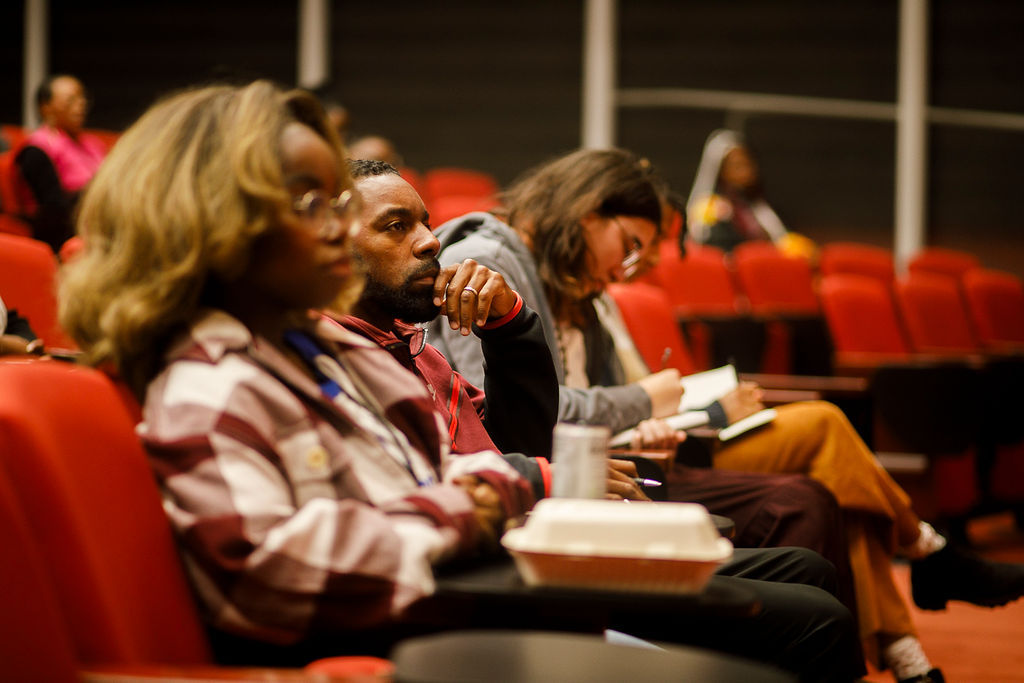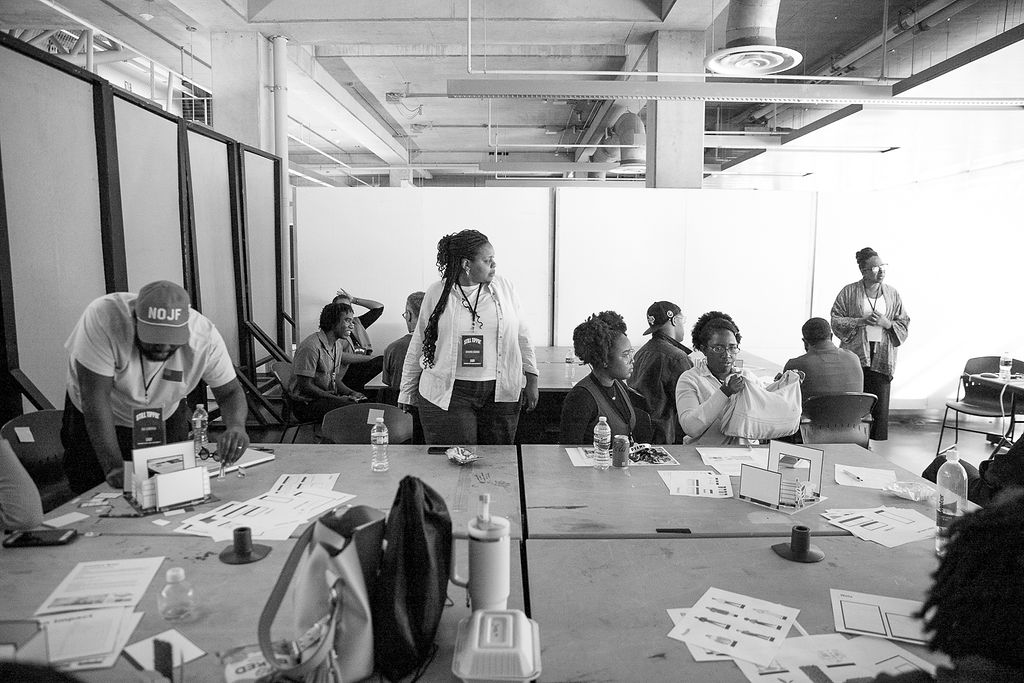PRAIRIE VIEW, Texas (Nov. 19, 2025) – The 2025 State of Black Design (SoBD) conference welcomed a dynamic mix of designers, creatives, students, and industry professionals to Prairie View A&M University this fall in a vibrant celebration of design and culture.
Held Oct. 30-Nov. 1, the conference aims to bring together “anyone who believes design can drive culture, equity, and innovation,” according to organizers.
Tracey L. Moore ‘98, associate professor of digital media arts and interim director of the Arts Program at Prairie View, was instrumental in bringing the national conference to campus. Having taken students to the 2024 SoBD conference at Tennessee State University, Moore joined the SoBD team this year to host the sixth conference at Prairie View.
“For many, the conference was a way to refresh or reset their creativity and think about different directions they could pursue in their design careers,” Moore said.
Hosting SoBD 2025 showcased PVAMU’s design talent to a national and international audience, with attendees traveling from across the United States and Canada. Organizers said the event reinforced the University’s commitment to innovation, leadership, and cultivating the next generation of designers and creatives.
The theme, “Still Tippin’: Driving Forward Design and Culture,” was “inspired by Houston’s swagger where tradition meets innovation and design shapes the future,” according to the website.
Moore highlighted PVAMU students’ involvement in the conference. Seven students helped plan and facilitate various components of the conference. Sumayah Jackson, India Graves, and Jonae Sandolph developed and facilitated the Purple Table Talks for Career Exploration sessions, in which alumni returned not only to participate but to represent their respective companies. Kaitlyn Roberts helped design the social media content, while Carter Rice and Jeremiah Lampkin showcased their respective design work during the 6ft, 7ft, and 8ft presentations.
“The program committee for SoBD highly praised our student interns and volunteers,” Moore said. “Without their efforts, we would not have been able to have a successful conference.”
Moore described the conference as “laidback,” where students can meet designers in a casual setting. The event allowed architecture firms, design agencies, animation studios, and graphic designers to connect with students. Students were also paired with industry professionals in hands-on workshops.
For attendees and participants alike, the conference was a time to be inspired, explore creativity, network with like-minded artists, and discuss current issues and the future of design.
A keynote session, “Signals from the Future: Futures Thinking in a World Shaped by AI,” by Dr. Monique Reeves, emphasized that artificial intelligence (AI) is not “the end of human creativity,” but a new beginning.
“The crux of the presentation was how to be ethically responsible with AI and not utilize it to replace human creativity, thinking, and interaction,” Moore said. “Part of that ethical responsibility centers around the notion that just because we can do something with AI does not mean that we should, and we need to train AI to be culturally sensitive.”
One presentation on modern artifacts by Dedié Adissem resonated with the audience, according to Moore: Modern everyday objects from today are tomorrow’s artifacts. One day, possibly an iPod, a canvas, a paintbrush, or a drumstick may, too, sit in a future museum.
For the event, the Nathelyne Archie-Kennedy Building was transformed with images from the University Special Collections and Archives Department, with purple and gold colors reflecting the Panther spirit.
SoBD also gave a donation to further develop PVAMU’s Digital Media Arts Program. Inspired by the conference, digital media arts students are already re-envisioning the Future Designers Day on the Hill student conference.
“Hosting this event exposed the talent of our design program and students to the industry,” Moore says. “We want the Digital Media Arts program to become the destination for young designers and creatives to study. Just like our Architecture counterparts, we want to be the number one producer of African American designers and creatives. Hosting this conference has definitely opened the door for industry professionals to consider PVAMU a place to offer their expertise as consultants and collaborators.”
By Christine Won
-PVAMU-





